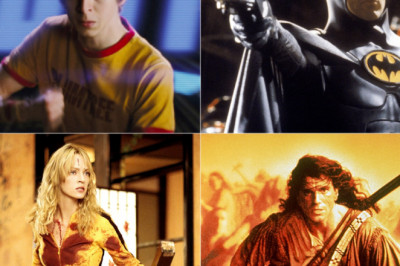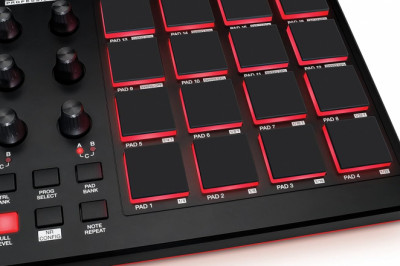The album cover is more than just a protective sleeve for your vinyl, CD, or digital download. It's an essential part of the music experience, offering a visual entry point to the sounds within. Throughout history, iconic album covers have become almost as celebrated as the music they encase, shaping not only our perception of an album but also influencing culture at large. This article explores eight remarkable examples of how album art has transcended mere packaging to become an integral component of musical storytelling and branding.
The Beatles - Sgt. Pepper's Lonely Hearts Club Band
Released in 1967, 'Sgt. Pepper's Lonely Hearts Club Band' by The Beatles is often hailed as one of the most influential albums in music history, both sonically and visually. The cover, designed by Peter Blake and Jann Haworth, features the band dressed in vividly colored military-style costumes amidst a collage of famous faces. This groundbreaking artwork signaled a shift in pop culture, emphasizing the album as a cohesive work of art. It invited listeners to delve into a fantastical, psychedelic world, perfectly complementing the experimental sounds within. The cover became a cultural icon, encapsulating the spirit of the 1960s and setting a new standard for creative expression in music.
Pink Floyd - The Dark Side of the Moon
Designed by Storm Thorgerson of the graphic art group Hipgnosis, the cover for Pink Floyd's 1973 masterpiece, 'The Dark Side of the Moon', features a simple yet profound prism dispersing light into color. This iconic image has become synonymous with the band and is one of the most recognizable album covers in music history. The design reflects the album's themes of light, darkness, and color, and its simplicity contrasts sharply with the complex, layered soundscape of the record. The cover art helped cement the album's legacy, illustrating how minimalistic design can capture the imagination and convey deep meaning.
Nirvana - Nevermind
Nirvana's 'Nevermind', released in 1991, features a cover that is as striking as it is controversial. The image of a baby swimming towards a dollar bill on a hook captured the band's anti-establishment ethos and the spirit of a generation disillusioned with the materialism of the era. Shot by photographer Kirk Weddle, the cover was conceptualized by Kurt Cobain and Geffen Records' art director Robert Fisher. It sparked debates about consumerism, censorship, and child exploitation, proving that album art could be a powerful medium for social commentary. 'Nevermind' became a symbol of the grunge movement, and its cover remains one of the most enduring images of the 1990s.
The Velvet Underground & Nico
The debut album from The Velvet Underground & Nico, released in 1967, featured a simple banana screen print by Andy Warhol, who also produced the album. Warhol's involvement gave the band instant notoriety, and the cover art, which originally included a peelable banana sticker revealing a flesh-colored fruit beneath, became a provocative symbol of the underground music scene. This collaboration between visual and musical artists highlighted the symbiotic relationship between different art forms and marked a significant moment in the convergence of pop art and rock music. The album's cover art is a testament to the power of visual imagery in amplifying the impact of music.
Joy Division - Unknown Pleasures
The cover of Joy Division's 1979 debut album, 'Unknown Pleasures', features a striking image of radio waves from a pulsar, originally published in an edition of the Cambridge Encyclopaedia of Astronomy. Designed by Peter Saville, the image was chosen by the band for its visual impact rather than its scientific significance. The stark, monochromatic waveform against a black background has become an iconic symbol of post-punk music and culture. Its enigmatic beauty complements the album's haunting soundscapes, demonstrating how abstract art can deeply resonate with music fans and become emblematic of a genre.
David Bowie - Aladdin Sane
The cover of David Bowie's 1973 album, 'Aladdin Sane', features the artist with a lightning bolt painted across his face, an image that has become synonymous with Bowie's chameleonic persona. Photographed by Brian Duffy and featuring makeup by Pierre La Roche, the cover captures Bowie's theatricality and innovation. The striking visual became a defining image of glam rock, embodying the genre's flamboyance and Bowie's influence on fashion and culture. The 'Aladdin Sane' cover art not only showcases Bowie's artistic vision but also illustrates the transformative power of album covers in crafting an artist's public image.
Fleetwood Mac - Rumours
The cover of Fleetwood Mac's 1977 album, 'Rumours', features a stylized photograph of Mick Fleetwood and Stevie Nicks, capturing the band's mystical aura and interpersonal dynamics. Designed by Desmond Strobel, while Herbert Worthington took the iconic photo, the cover art hints at the tumultuous relationships within the band that fueled the album's creation. The ethereal, dreamlike quality of the image complements the emotionally charged and melodically rich tracks within, making 'Rumours' not only a musical milestone but also a visual one. The album cover stands as a testament to the era's aesthetic and Fleetwood Mac's enduring legacy.
Prince - Purple Rain
The cover for Prince's 1984 album 'Purple Rain', shot by Ed Thrasher, features the artist riding a motorcycle against a backdrop of purple mist and flowers. This image encapsulates the multifaceted nature of Prince's artistry, blending elements of rock, R&B, pop, and psychedelia. The cover art for 'Purple Rain' not only reflects the album's eclectic sound but also Prince's iconic status and his influence on fashion, music, and culture. The visual presentation of 'Purple Rain' solidified Prince's image as a daring and innovative artist, showcasing the importance of album covers in artist branding and the overall music experience.
![What Is Macaulay Culkin Up To Now?]() 19
19 ![Biggest Scandals in Hollywood in 2024]() 6
6 ![Bob Marley: One Love Movie Review]() 4
4 ![Celebrity Feuds: Hollywood's Most Notorious Fights and Fallouts]() 4
4 ![Unleashing Creativity with AKAI Professional MPD218 - A Comprehensive Review]() 3
3 ![The Rise of Gen Z Stars: Who's Topping the Charts in 2024]() 3
3 ![Scandal Alert: The Latest Celebrity Controversies Making Headlines]() 3
3 ![Top 7 EGOT Winners of All Time]() 2
2 ![The Most Unlikely Movie Stars]() 2
2 ![Dave Grohl: The Storyteller - An In-Depth Book Review]() 2
2 












Comments
0 comment